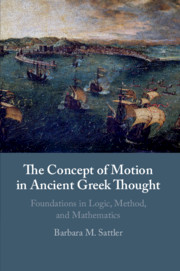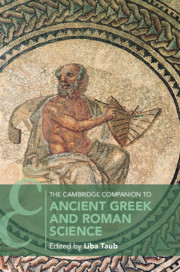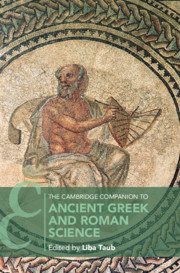The Concept of Motion in Ancient Greek Thought
This book examines the birth of the scientific understanding of motion. It investigates which logical tools and methodological principles had to be in place to give a consistent account of motion, and which mathematical notions were introduced to gain control over conceptual problems of motion. It shows how the idea of motion raised two fundamental problems in the 5th and 4th century BCE: bringing together being and non-being, and bringing together time and space. The first problem leads to the exclusion of motion from the realm of rational investigation in Parmenides, the second to Zeno's paradoxes of motion. Methodological and logical developments reacting to these puzzles are shown to be present implicitly in the atomists, and explicitly in Plato who also employs mathematical structures to make motion intelligible. With Aristotle we finally see the first outline of the fundamental framework with which we conceptualise motion today.
- Explores the rich conceptual basis on which our understanding of motion and speed is built
- Shows the reader which changes in logic, ontology and methodology were crucial for establishing natural science
- Provides an overview of the development of the understanding of motion all the way from the Presocratics to Plato and Aristotle
Reviews & endorsements
"Barbara Sattler's book is engaging, sophisticated and full of stimulating ideas. It traces the development of crucial presuppositions of natural science from their earliest roots in Parmenides to their fruition in Aristotle. The perspective and expertise which Sattler brings to these issues will be of great interest and value to those working in ancient philosophy or in the history of science.” Stephen Makin, University of Sheffield
'… a thoughtful and probing book by an original thinker. Sattler's understanding of foundational issues in mathematics is put to fine use, and she does important conceptual work … There is much of great value in this book …' Sylvia Berryman, Journal of the History of Philosophy
Product details
No date availableAdobe eBook Reader
9781108804080
0 pages
Table of Contents
- Introduction
- 1. Conceptual Foundations
- 2. Parmenides's account of the object of philosophy
- 3. Zeno's Paradoxes of Motion and Plurality
- 4. The atomistic foundation for an account of motion
- 5. The Possibility of Natural Philosophy according to Plato I: The Logical Basis
- 6. The Possibility of Natural Philosophy according to Plato II: Mathematical Advances and Ultimate Problems
- 7. Aristotle's Notion of Continuity – the Structure underlying Motion
- 8. Time and Space – the Implicit Measure of Motion in Aristotle's Physics
- 9. Time as the simple measure of motion.







